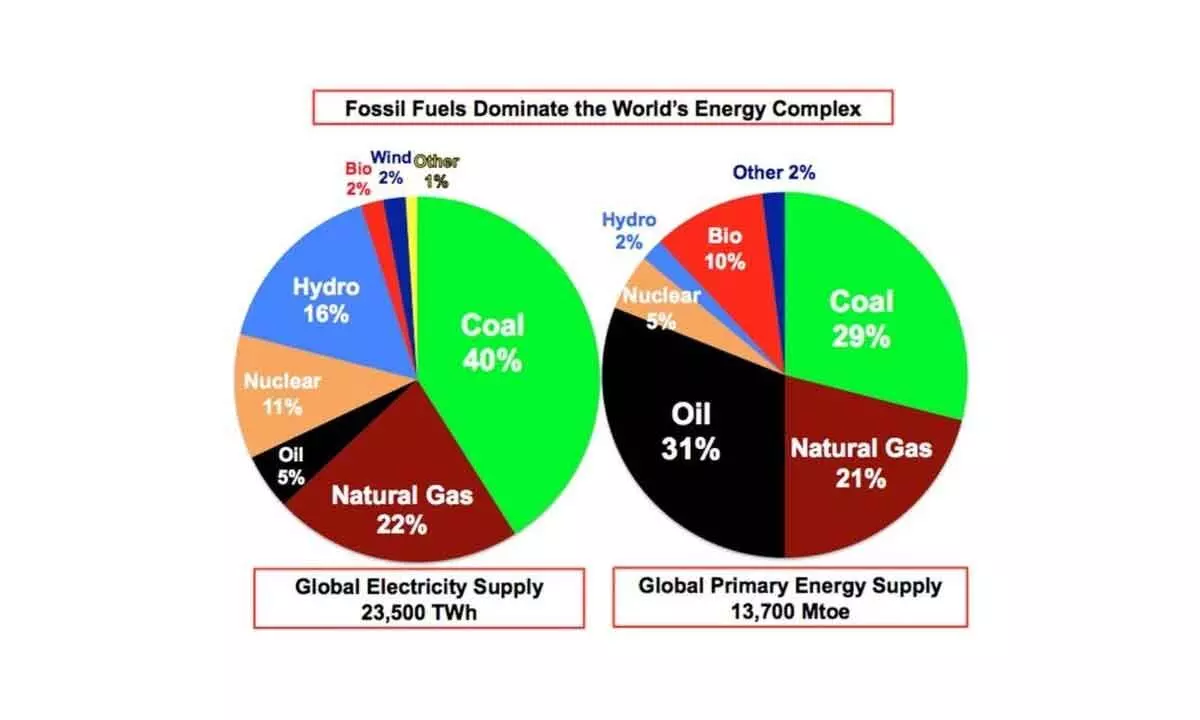Carbon intensive ‘green’ hydrogen will malign Indian credibility, undermine its market value, cautions study
Around 75 per cent of the country’s electricity generation is coal-based
image for illustrative purpose

The Ministry of New and Renewable Energy (MNRE) recently notified emission thresholds for green hydrogen production, but the accounting and certification methods are yet to be finalised. The integrity of this methodology would be crucial to ensure that green hydrogen does not embody emissions from fossil fuel powered electricity
India’s green hydrogen mission could end up boosting carbon emissions in the absence of the right safeguards and carbon accounting, warns think tank Climate Risk Horizons.
India’s green hydrogen mission is gaining momentum with the government recently unveiling a R&D Roadmap worth all of Rs 400 crore.
India has a 2030 production target of five million metric tonnes (MMT) of green hydrogen per annum. New research suggests that the embodied carbon emissions from “green” hydrogen that is generated from grid-powered electrolysis could be much higher than the emissions from the traditional “grey” hydrogen produced from fossil fuels.
In a brief titled ‘Green Hydrogen: Promises & Pitfalls’, Climate Risk Horizons cautions that the so-called green hydrogen produced without stringent energy accounting standards would not be climate-friendly and could in fact be many times worse than traditional grey hydrogen produced from fossil fuels.
The 2030 target of 5 MMT of green hydrogen would require about 250 TWh of electricity, which is approximately 13 per cent of India’s current electricity generation.
If even some of this electricity comes from the coal-powered grid, it will drive significant additional emissions into the atmosphere. Around 75 per cent of India’s electricity generation is coal-based.
The Ministry of New and Renewable Energy (MNRE) recently notified emission thresholds for green hydrogen production, but the accounting and certification methods are yet to be finalised.
The integrity of this methodology would be crucial to ensure that green hydrogen does not embody emissions from fossil fuel powered electricity.
“It’s essential that the MNRE gets this right. Green hydrogen has massive potential to reduce carbon emissions from industrial sectors, but only if the accounting methods and safeguards are rigorous. This means it has to be powered 100 per cent by new, additional renewable energy that is matched to consumption on an hourly basis.
"If the rules have loopholes, either by allowing renewable energy (RE) credits or matching consumption with RE generation on a monthly or annual basis, it will not deliver actual carbon reductions. This will undermine the green hydrogen market before it can even get started,” cautioned Ashish Fernandes, CEO of Climate Risk Horizons.
Apart from climate pollution risks, the briefing also highlights how carbon intensive “green” hydrogen can damage India’s international credibility, reduce the industry’s access to export markets and undermine public trust in the energy transition.
To avoid these pitfalls, the carbon accounting methodology must, among other things, include Scope 2 emissions, to ensure that the emissions of the electricity used in the green hydrogen manufacturing process are accounted for.
Existing research from the US, which is also formulating its green hydrogen standards, shows that the electricity requirement for electrolysers must be matched with dedicated clean energy supply on an hourly basis, instead of just a monthly or annual basis, to deliver actual carbon reductions.
The clean energy built for hydrogen electrolysis must also be additional, so as to avoid cannibalising existing renewable energy supplies or the planned RE capacity meant to decarbonise the electricity grid.
Lastly, the RE facility and the green hydrogen facility should be connected on the same grid to ensure that the electrolyser’s demand is met through clean energy rather than coal.

